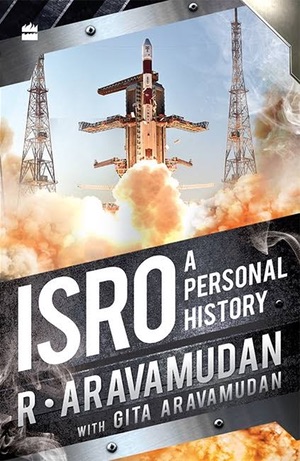Review: ISRO: A Personal Historyby Jeff Foust
|
| Aravamudan was a young engineer working for India’s Department of Atomic Energy in 1962 when he heard the government was recruiting engineers—informally, via word-of-mouth—to form the core of a new space program. |
It’s the latest milestone for a program that has become one of the most impressive in the world despite the humblest of origins a little more than a half-century ago. Ramabhadran Aravamudan was there for those beginnings as a young engineer in the early 1960s, rising through the ranks to become the equivalent of a NASA center director before retiring in the late 1990s. ISRO: A Personal History is a memoir of his time at the space agency as it built up its launch and satellite capabilities.
Aravamudan was a young engineer working for India’s Department of Atomic Energy in 1962 when he heard the government was recruiting engineers—informally, via word-of-mouth—to form the core of a new space program, initially focused on sounding rockets. He applied and was selected, spending a year in the United States working at NASA’s Wallops Flight Facility before returning to India, responsible for tracking systems for India’s sounding rocket program.
He rose through the ranks in the years to come as the India’s space program grew, with ISRO formally established in 1969. The sounding rocket program evolved into a series of launch vehicles, including the Polar Satellite Launch Vehicle (PSLV) that has become the workhorse of the Indian space program, and a popular option for small satellite developers worldwide. Aravamudan went on to become director of India’s launch site at Sriharikota and then the ISRO Satellite Centre.
Aravamudan was part of an initial core of engineers who, like him, stayed with ISRO and rose through the ranks. Some, like G. Madhavan Nair, went on to run the space agency. Another engineer Aravamudan became close friends with, Abdul A.P.J. Kalam, later worked on missile programs and eventually became president of India. That core, he writes, provided the agency with the continuity needed to grow while overcoming the eventual setbacks, such as launch failures, over the years.
The book at times reads like a string of anecdotes of various events, from the cultural displacement he felt living in America during his time at NASA to the various challenges experienced building up a space program in India. It is not an academic history of India’s space agency but, as the title states, a personal one, which still gives a good feel of what it was like to create a space program from scratch.
| It is not an academic history of India’s space agency but, as the title states, a personal one, which still gives a good feel of what it was like to create a space program from scratch. |
Sometimes, though, Aravamudan gets a little carried away. In the book’s prologue, Aravamudan describes being in mission control as India’s first Mars mission, the Mars Orbiter Mission, successfully entered orbit and started returning images. “No other Mars Mission had succeeded in its very first attempt,” he writes, a variant of common Indian claims that the country was the first to successfully place a spacecraft in orbit around Mars on its first try. ESA’s Mars Express spacecraft, that agency’s first Mars mission, entered orbit around Mars a decade earlier, and is still operating today. Later, writing about India’s first successful orbital launch in 1980, he says, “Decades have passed by since then and this club [of spacefaring nations] has not increased in strength!” In fact, several countries have since launched satellites into orbit, including Iran, Israel, and both North and South Korea.
Those exaggerations aside, ISRO: A Personal History is an interesting look at the formation and early development of India’s space program from an insider’s view. As India’s space program gains in international stature, from its launch vehicle programs to robotic missions to the Moon and Mars, it’s worth recalling how far that the country has some in the last half-century.
